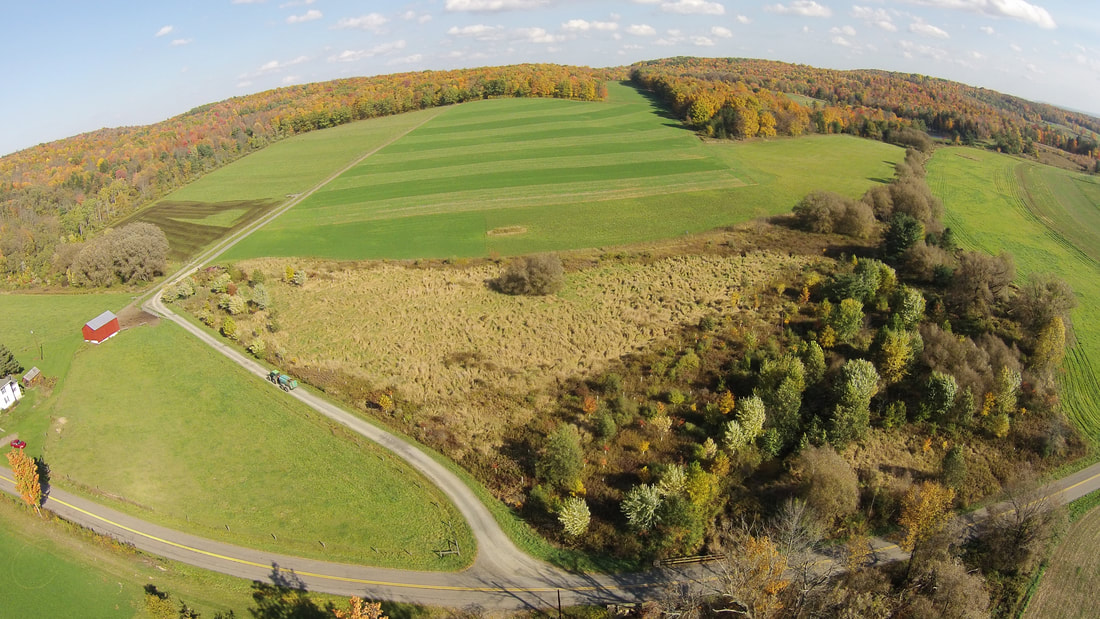CONSERVATION CORNER
A weekly blog for all things conservation
 By: Nathan Dewing, Agricultural Team Leader, Bradford County Conservation District Life is drawn to water. We all can relate to that. Land bordering waterways and waterbodies is teaming with life. Riparian is a term literally meaning “riverbank”, or land beside the water. How we manage our riparian land has far reaching effects. Therefore, the conservation district gives considerable attention to equipping landowners to manage them well. Current focus on the Chesapeake Bay watershed is opening many opportunities for landowners wishing to improve riparian areas, including grant funding, plant materials, and more. Pennsylvania has more riparian land than almost any other place in the US. In fact, some counts have Pennsylvania second only to Alaska in miles of rivers and streams. The natural condition of streams in Pennsylvania was nearly entirely forested, and relatively stable compared with today. Though stream erosion has been happening for as long as water has flowed, development has certainly worsened stream stability. It’s a significant challenge, and one worth tackling.
Allowing stream sides to revert to natural vegetation is the best recommendation. Shaded streams are cooler, slower, cleaner and more stable. The ideal picture painted for riparian land is a three-zone area with trees directly adjacent to the stream, transitioning to lower growing shrubs and then to grass a bit farther from the stream. Riparian land supports re-production on a massive scale when allowed to function naturally. Managing for natural function is increasingly the focus for riparian land managers. The conservation district would like to hear from landowners wishing to make improvements in riparian areas. A relatively new source of funding through PA’s Department of Conservation and Natural Resources (DCNR) helps landowners do just that. We can help connect you with this resource and others. Start by contacting the conservation district to discuss your goals. Riparian areas will revert to forest cover over time if left alone. Noxious and invasive plants can however, hijack areas. You can influence the species make up and timing with some planning, planting, and maintenance, and it is these activities that grant funds aim to encourage. The current DCNR funds can help complete planting and then with maintenance costs for several years to get new trees started well. For some landowners, livestock access to the stream is an obstacle to healthy riparian function. Livestock access is not bad in every situation. If access is very highly managed, livestock can be moved through riparian areas while maintaining a healthy situation. Anything short of highly intentional livestock management will likely lead to degrading conditions. For these situations, grant funds can sometimes help with fencing, and alternative water sources. Grazing farms may find that improving water side management will help them advance farm business goals on multiple fronts. There are also opportunities for help planting trees in upland fields to guide their transition back to forest cover. Some of these funds are available now. You can get started today and see life flourish again by the water. The Bradford County Conservation District is committed to helping people manage resources wisely. You can visit the Bradford County Conservation District at 200 Lake Rd in Wysox across from the Wysox Fire Hall. Contact us at (570) 485-3144 or visit our web page at www.bccdpa.com.
0 Comments
Leave a Reply. |
AuthorsVarious staff at the Bradford County Conservation District Archives
July 2024
Categories
All
|
|
Bradford County Conservation District
Stoll Natural Resource Center 200 Lake Road, Suite E | Towanda PA 18848 Phone: (570)-485-3144 |
